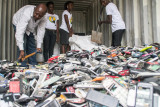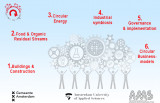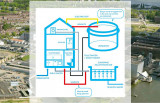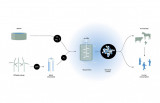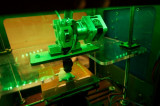Stay in the know on all smart updates of your favorite topics.
Moving from a linear to a circular economy means minimising the waste and pollution by reducing, recycling and reusing. The City of Amsterdam aims to redesign twenty product- or material chains. The implementation of material reuse strategies has the potential to create a value of €85 million per year within the construction sector and €150 million per year with more efficient organic residual streams. Amsterdam set up an innovation program on the circular economy; www.amsterdamsmartcity.com/circularamsterdam. By converting waste into electricity, urban heating and construction materials, the Amsterdam Electricity Company generates 900 kWh per 1000 kg of waste. 75% of the sewage system is separated for waste and rain water and the silt which remains after treating waste water is converted into natural gas. Share your innovative concepts and ideas on circular economy here.
Organizing the Circular City

Performing action-oriented research into (water) governance in relation to new water technology, including decentralised water initiatives.
Cross Chain Control for waste collection and processing

Cooperation between companies in South East Amsterdam, waste collectors, start-ups and knowledge institutions on the realisation of a circular economy and the reduction in the number of journeys.
Biopark and 'smart linking' in the Port of Amsterdam
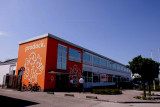
Maximise the potential of the exchange and use of each of the companies' by-products and waste products.
Amsterdam Metropolitan Area raw materials agenda

Accelerating the transition to a circular economy by encouraging cooperation at regional level – between companies, authorities and knowledge institutions – and new activities.
Waste to aromatics
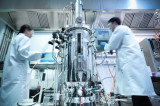
Convert biomass flows (including cellulose from waste water) into phenols/aromatics which can be used as a basic raw material for the chemical industry.
Extra information
In order to produce bio-aromatics from municipal waste streams, the (hemi-) cellulose that is present in the organic fractions needs to be transformed into furans. In turn, these furans serve as an agent for the final production of aromatics. Biorizon-partner TNO has got two technologies available for the conversion of cellulose into furans:
- The superheated steam (SHS) technology. This is mainly suitable for the procession of relatively solid material and uses steam to extinguish furans from the waste stream.
- The second technology is suitable for the processing of wet fractions and uses a system with two fluid phases in which the furans are pulled towards an organic solvent.
Read more....
Road as materials depot
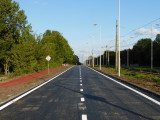
increasing recycled materials in asphalts
Amsterdam Circular Challenge

Amsterdam wants to be the circular capital of the world. And we’re already halfway to make this vision come true. Companies, govermental organisations, universities & scientists, they all come to Amsterdam to participate in the growing amsterdam circular movement.
Urban Factory - AUAS (HvA)
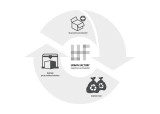
make the circular economy more tangible
3D printing with local residual products (plastic waste)
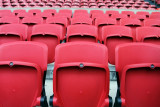
Extra information
The Amsterdam ArenA (one of the most sustainable stadiums in the world) replaces in the run-up to the Euro 2020 all stadium seats and would like to do so in a socially responsible way.
It involves approximately 48,000 hard plastic chairs on metal frames and 4 to 5,000 more luxurious upholstered chairs of corporate boxes and grandstands. Along with Better Future Factory, an innovation and design firm specializing in recycling of plastic waste flows, the HvA will examine with the ArenA in what way the seats can be reused preserving the highest value as possible.
Amsterdam ArenA and HvA will explore one of the scenarios in collaboration with 3D4Makers, a company that works with (recycled) plastic filament for printers using Fused Deposition Modelling. The question is how the material of the stadium seats behaves with these processing techniques considering the impurity of the material.
In addition, this project investigates the technical and aesthetic properties of the processed material in order to determine what can be made for this type of products.
Circular Dataplatform
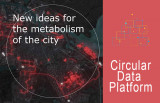
creating insights in the flow of raw material and waste
Urban Pulse research as starting point
The Urban Pulse research generated the knowledge required to build sustainability strategies for energy, water, food, and natural resources in the city.
A fresh approach to ‘urban metabolism’ can ensure that Amsterdam will be spared shortages of energy, water, food or natural resources in the future, and will reduce environmental pressure. This can only be achieved by acquiring a clear and precise understanding of the flow patterns of essential resources in the city. The researchers used a combination of methods and technologies informed by local residents, knowledge and industry partners.
Data of different urban flows such as water, waste, food and energy must be integrated and made easily accessible to relevant stakeholders. Only then can it become possible to identify options for reuse, cascading and synergies between these different urban flows.

Download the Urban Pulse report
Read more about the PUMA Project.
Publications
<http://www.sciencedirect.com/science/article/pii/S0921344916302294>
http://onlinelibrary.wiley.com/doi/10.1111/jiec.12461/abstract
PUMA: Prospecting the Urban Mines of Amsterdam
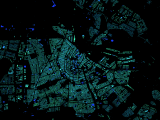
exploring Amsterdam's 'urban mine'
Conclusion & results
Overall, most assumption were found to remain valid, although the validity of some assumptions could not be indicated, specifically due to the lack of access to roof spaces. However, five assumptions were found to be in need of revision, these are briefly listed in this chapter together with associated revision recommendations.
1. Buildings before 1900 were found to not include steel in the load-bearing
structure
Construction year data from the BAG register is available, which could provide
an indication of the metal content of the load bearing structure. Inclusion of the
construction year in the dataset, combined with a with a lower steel score for
buildings built before 1900, should be considered.
2. Apartments smaller than 75m2 were found not to have a separate toilet and
bathroom, instead the toilet was present in the bathroom
The assumed amenities of the 55 - 75m2 standard apartment could be changed to
one kitchen and a bathroom with toilet. The impact on the metal content should
be researched and adapted when change is found to be significant.
3. Recently completed buildings were found not to be included in the database
It should be ensured that the database is kept up to date in order to account for
these recently completed building.
4. Some buildings with a non-residential function were found to (temporarily)
accommodate a residential function
To account for all residential buildings, a clear distinction needs to be made
between the residential function and use of the building. Although the currently
used BAG function distinction might very well be adequate, research on the
relevance of including buildings used for residential purposes, but with other
functions according to the BAG register is recommended. This research should
account for the metal concentration in these buildings versus the amount of
these buildings in Amsterdam.
5. Some buildings were found to use electric cooking appliances rather than gas
The absence of gas connections in the kitchen is likely to lower the copper content
of the building. Because policy objectives increasingly aim to disconnect from
the gas infrastructure (ECN, 2016), it is recommended to research its impact on
the amount of copper in buildings to be able to accurately estimate the copper
content in the future.
Download the publication.
Go to the projectsite.
Partners:
Leiden University, Institute of Environmental Sciences: Ester van der Voet, Ruben Huele
Waag Society: Job Spierings, Ruben Huele
AMS Institute / Delft University of Technology, Faculty of Architecture and the Built Environment: Ellen van Bueren, Alexander Koutamanis, Boukje van Reijn
Metabolic: Anna Krotova
Industrial Ecology students: Luuk Gremmen, Sho Lin
Project leader / contact:
Ruben Huele, <a>urbmines@xs4all.nl</a>
AUAS (HvA): Urban Technology programme

Circular City is intended to help Amsterdam make the transition to a circular city, with a focus on the high-quality reuse of materials and products, local production, waste and return logistics, circular construction and area development.

Stay up to date
Get notified about new updates, opportunities or events that match your interests.
